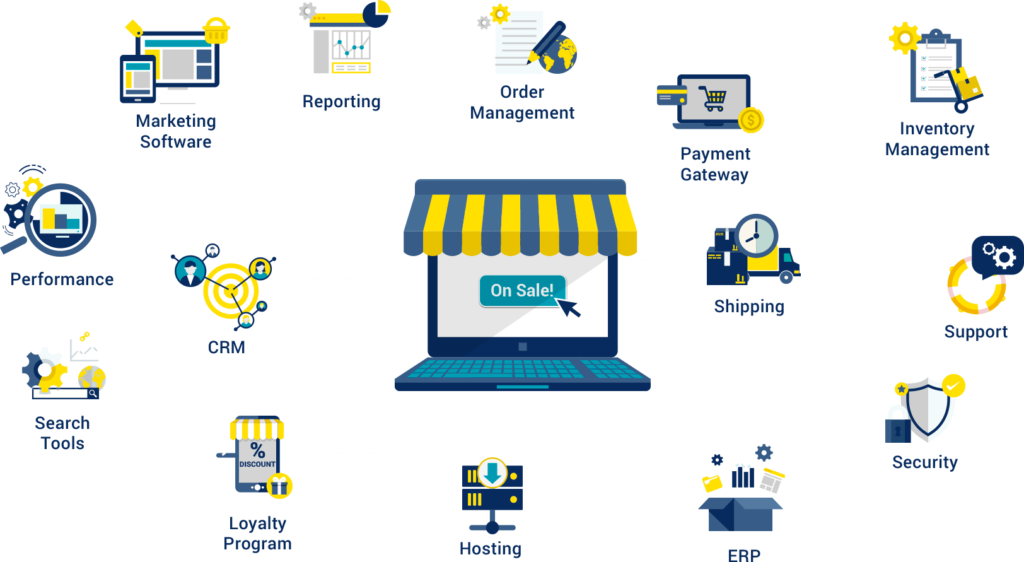 Earlier, when one would talk about customer experience or CX, it was often related to customer support. Today from a business and technological standpoint, several hardware devices, cloud-enabled software platforms, omni-channel communication systems and other services work cohesively to deliver superior customer experience. It requires an interplay of smart eCommerce website development and adoption of compelling solutions to achieve this objective.
Earlier, when one would talk about customer experience or CX, it was often related to customer support. Today from a business and technological standpoint, several hardware devices, cloud-enabled software platforms, omni-channel communication systems and other services work cohesively to deliver superior customer experience. It requires an interplay of smart eCommerce website development and adoption of compelling solutions to achieve this objective.
Many eCommerce giants believe and demonstrate that customer experience has a direct impact on revenue earnings. Brands have been competing globally to raise the standards of their services, online store or website design to make the customer experience their absolute priority.
From custom eCommerce developments to strong website content to safe online payment options to drone deliveries and customer review platforms, the list of technologies that cater to this need is endless.
But this also makes one ponder about what made the retail industry to suddenly shift its focus from price and competition crisis.
The answer is the growing relevance of mobile networks and rampant use of digital devices that gave retailers an alternative pathway to boost earnings and enhance customer experience.
Ever since the customers began perceiving the conveniences of online purchasing, the growth of the web-only retail companies also skyrocketed. As per the recent research data by Statista, nearly 1.6 billion people from across the world engaged in online purchases in 2017 and the overall sales from global e-retail reached 2.3 million USD. The statistical data also revealed the growth potential of this segment up to 4.4.8 trillion USD within the next four years.
With possibilities brewing even across the regions where large-scale developments happen in a less rapid pace, online stores concept has become the order of the retail industry!
Simply put, it has created a chain reaction in the international markets, leading to the wide-scale development of eCommerce tools and platforms. Now as the digital buyer penetration is nearing 50 percent of the total internet users, it is probably the ideal period for eCommerce firms to make the change. eCommerce development companies need to engage with online retailers to build a seamless web store that is especially aimed towards enhancing customer experiences.
Based on the reviews and market reach, compiled below are a list of eCommerce technologies and tools that growing eCommerce businesses should really give it a thought for better customer loyalty and experience:
- Product Search Tools: eCommerce companies build webstores that are responsive to customers’ expectations, needs, and intentions to simplify the buying journey. Features like auto-complete in the search section, the addition of options for a customized search like color, size, price, and filters will lead to seamless search and buying on the website or mobile apps.
- Self-service Customer Service Desks: Many brands have multiple steps that lead customers across the buying journey. The idea behind self-service customer service desk is to shorten the journey based on their historical data on buying preferences, behaviors and search patterns.
- Bots, Virtual Assistants and AI Tools: Employing AI tools have repeatedly shown a positive impact on productivity, accuracy, and cost-effectiveness. AI can be leveraged to increase automation and eliminate the need for manual interventions that often increase response and turnaround time. Chatbots and virtual assistants that can replace traditional contact centers and customer service personnel by offering customer support services in real time.
- Omni-channel Communication Systems: Instead of choosing the long process of order tacking and responding for customer queries through emails after referring too many sales documents and data, omnichannel support would help customers make the best use of their smartphone apps embedded with sensors to know the actual status of the product or understand their purchase behaviours better to initiate sales.
- Speech-enabled Voice Recognition Tools: Using voice-controlled assistants and speech-enabled services platforms that are powered with Natural Language Processing and Understanding can help customers have easy interactions with bots and resolve their issues in real-time.
- Location-based Communication: Technologies like beacons that are a fine mix of Bluetooth and GPS help customers not miss out on important promotional or product messages even when they are out of the network zone or offline. It helps send personalized messages and track their activities to assist and drive better customer engagement.
For more information on ecommerce development solutions, reach our experts today!











